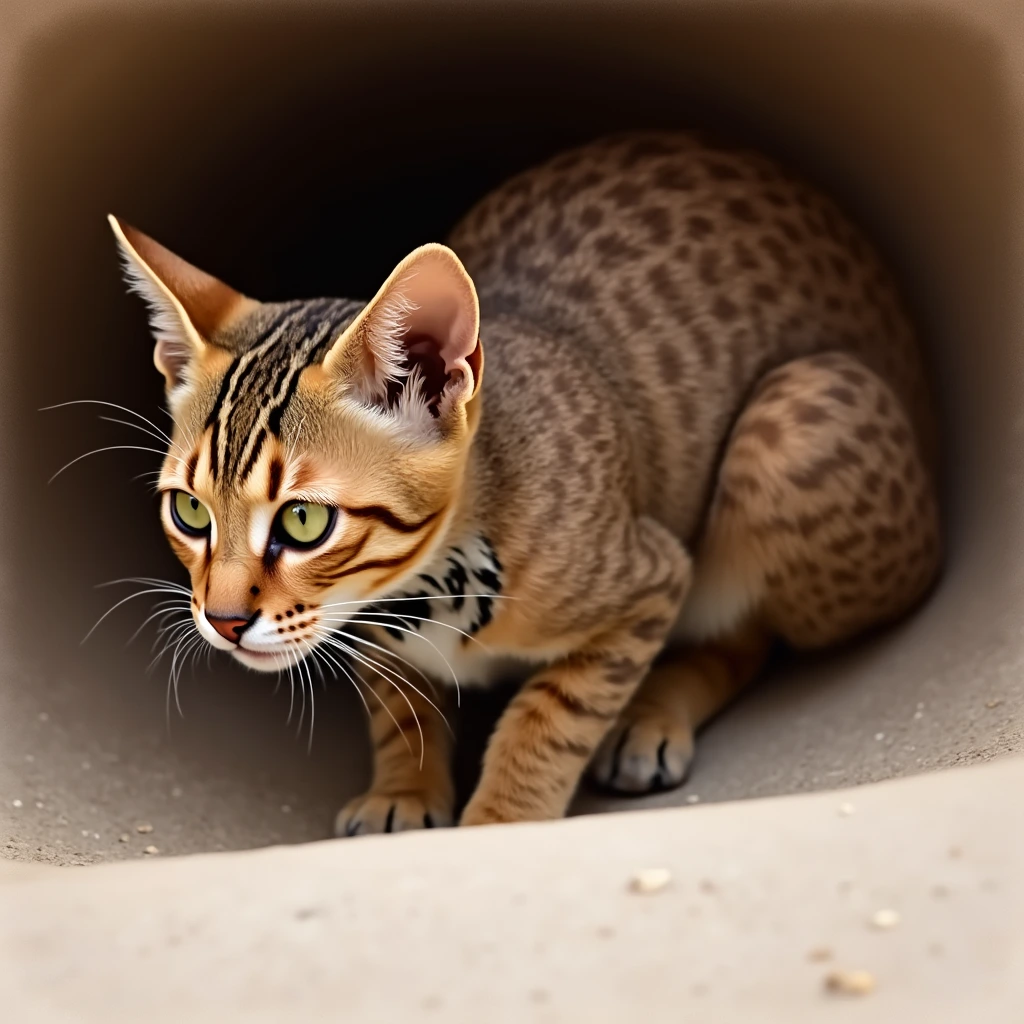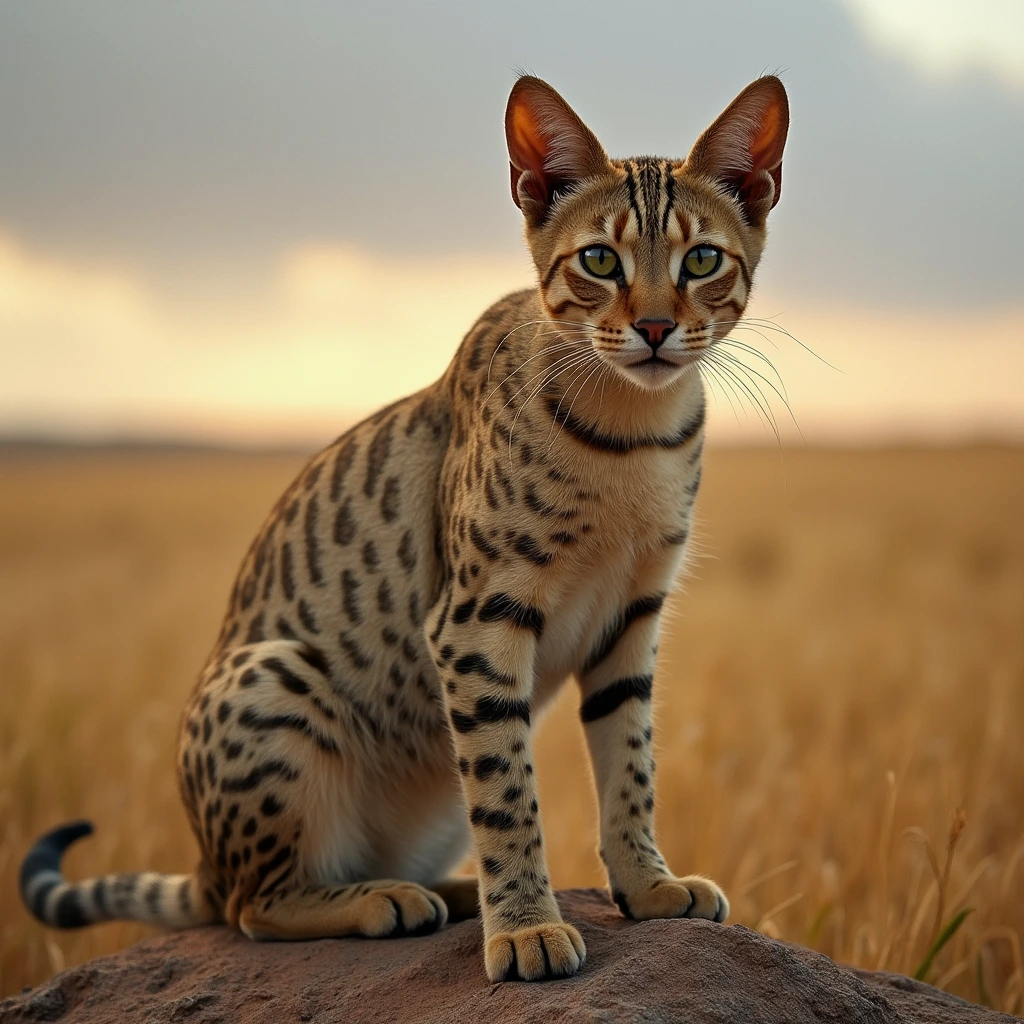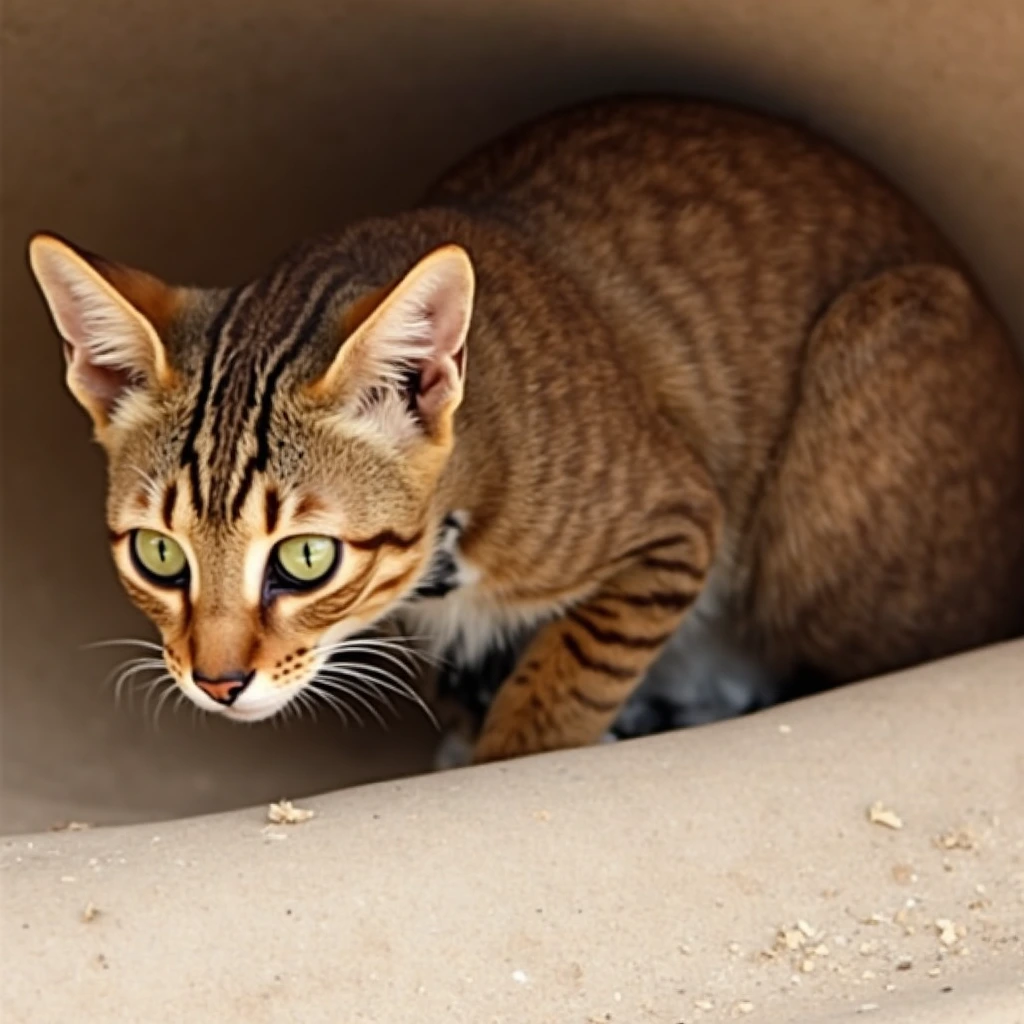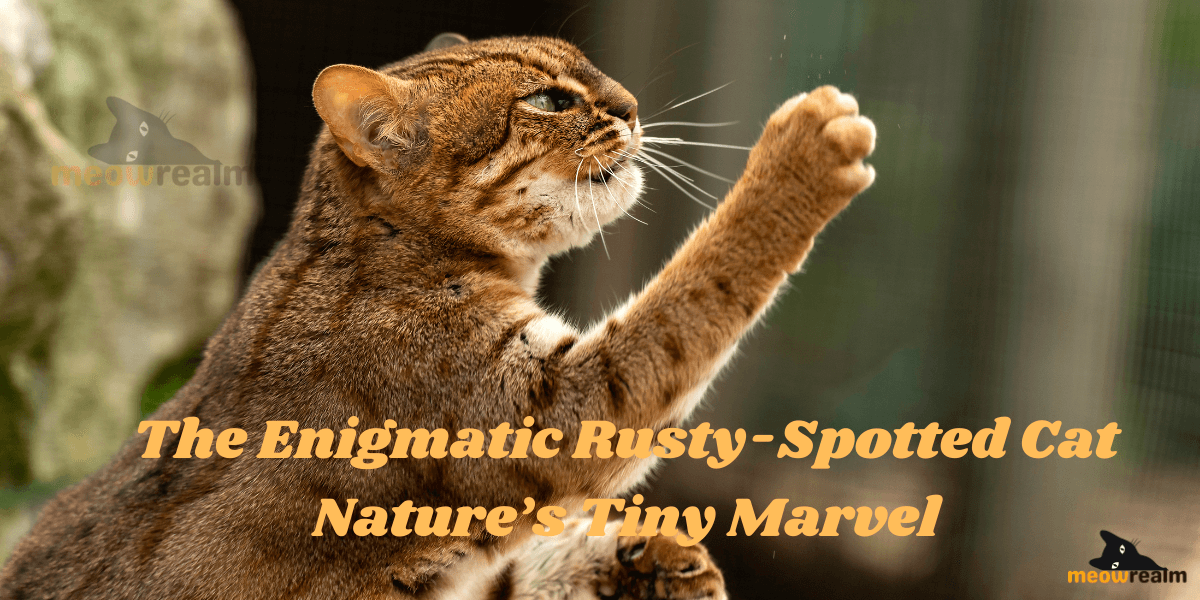The Rusty-Spotted Cat (Prionailurus rubiginosus) is a captivating and diminutive wild cat species native to India and Sri Lanka. Known for its small size and distinctive appearance, this feline has intrigued wildlife enthusiasts and researchers alike. In this article, we will delve into the characteristics, habitat, behavior, and conservation status of the Rusty-Spotted Cat.
Table of Contents
Characteristics of the Rusty-Spotted Cat

The Rusty-Spotted Cat is one of the smallest wild cats in the world, with a head-body length ranging from 35 to 48 cm and a tail length of 15 to 30 cm. It weighs between 0.9 to 1.6 kg. The cat’s fur is short and soft, with a reddish-grey hue and rusty spots scattered across its back and flanks. Its face is adorned with six dark streaks, extending from the eyes to the cheeks and forehead, giving it a distinctive appearance. The underparts are whitish with small brownish spots, and the paws and tail are uniformly reddish-grey.
Habitat and Distribution
The Rusty-Spotted Cat is primarily found in India and Sri Lanka, with recent sightings reported in Nepal. It inhabits a variety of environments, including moist and dry deciduous forests, grasslands, scrublands, and hill slopes. This adaptability allows the Rusty-Spotted Cat to thrive in diverse habitats, from dense forests to open grasslands.
Behavior and Diet
The Rusty-Spotted Cat is nocturnal and solitary, preferring to hunt under the cover of darkness. Its diet mainly consists of small mammals, birds, and insects, although it occasionally preys on amphibians and reptiles. The cat’s small size and agile body make it an efficient hunter, capable of navigating through dense vegetation and capturing elusive prey.
Conservation Status
The Rusty-Spotted Cat is currently listed as Near Threatened on the IUCN Red List. Its population is fragmented and faces significant threats from habitat loss and fragmentation due to deforestation and agricultural expansion. Conservation efforts are crucial to protect this species and its habitat. Protected areas and wildlife reserves play a vital role in preserving the natural environment of the Rusty-Spotted Cat.
Adaptations and Survival
One of the most remarkable features of the Rusty-Spotted Cat is its ability to adapt to various environments. This adaptability is evident in its varied diet and the range of habitats it occupies. The cat’s small size and agile body allow it to move swiftly and stealthily through its habitat, making it an effective predator.
Importance in the Ecosystem
The Rusty-Spotted Cat plays a crucial role in its ecosystem as a predator. By controlling the population of small mammals and insects, it helps maintain a balanced ecosystem. Its presence indicates a healthy environment, as it requires a diverse and abundant prey base to thrive.
Threats and Conservation Measures
Despite its adaptability, the Rusty-Spotted Cat faces several threats. Habitat destruction due to logging, agricultural expansion, and urbanization poses significant risks. Additionally, hunting and trapping for the pet trade and fur industry further threaten its population. Conservation measures such as habitat protection, anti-poaching efforts, and public awareness campaigns are essential to safeguard the future of the Rusty-Spotted Cat.
Research and Conservation Efforts
Ongoing research and conservation efforts are vital to understanding and protecting the Rusty-Spotted Cat. Studies on its behavior, habitat preferences, and population dynamics provide valuable insights that inform conservation strategies. Collaboration between governments, conservation organizations, and local communities is essential to ensure the long-term survival of this species.

The Rusty-Spotted-Cat is a fascinating and resilient species that highlights the rich biodiversity of South Asia. Its unique characteristics, adaptability, and role in the ecosystem make it a vital part of the natural world. By understanding and protecting the Rusty-Spotted- Cat, we contribute to the conservation of our planet’s precious wildlife.
5 Ways the Rusty-Spotted Cat Thrives in Its Natural Habitat
1. Exceptional Camouflage
The Rusty-Spotted Cat’s coat is a mix of gray and reddish-brown with small rust-colored spots along its back and flanks. This natural camouflage helps it blend into dry forests, grasslands, and rocky terrain, making it nearly invisible to predators and prey alike.
2. Agile and Stealthy Hunting Skills
Despite its size—measuring only 35 to 48 cm (14 to 19 inches) in body length—the Rusty-Spotted Cat is a formidable hunter. It moves with extreme agility, using stealth and quick reflexes to catch rodents, birds, lizards, and insects. Its ability to leap and pounce with precision ensures a high hunting success rate.
3. Nocturnal Behavior for Safety
To avoid larger predators such as leopards and jackals, the Rusty-Spotted Cat is primarily nocturnal. It hunts at night when the environment is quieter, reducing competition and increasing its chances of catching prey. During the day, it hides in dense vegetation or rocky crevices to stay safe.

4. Adaptability to Various Habitats
Unlike some wild cats that rely on a specific ecosystem, the Rusty-Spotted Cat thrives in a variety of habitats. It can be found in dry forests, scrublands, and even near human settlements. This adaptability helps it survive even in areas affected by deforestation.
5. Climbing and Burrowing Skills
This small feline is an excellent climber and often takes refuge in trees to escape threats. It can also use burrows, hollow logs, and rocky caves as hiding spots, allowing it to evade predators and harsh weather conditions.
In this article, we have explored the Rusty-Spotted characteristics, habitat, behavior, and conservation status. By raising awareness and supporting conservation efforts, we can help ensure the survival of this remarkable species for future generations.

